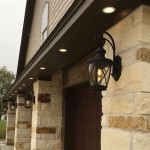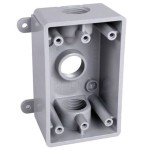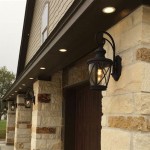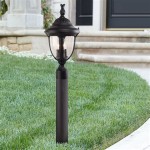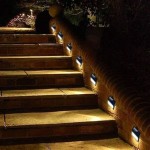Crafting Your Own Backyard Oasis: A Guide to Building an Outdoor Fireplace
An outdoor fireplace can transform a backyard into a welcoming and functional extension of the home. It provides warmth during cooler evenings, creates an inviting ambiance for gatherings, and serves as a focal point for outdoor living spaces. Building an outdoor fireplace is a significant undertaking, requiring careful planning, adherence to safety regulations, and a commitment to craftsmanship. This article outlines the key considerations and steps involved in constructing a durable and aesthetically pleasing outdoor fireplace.
Planning and Preparation: Laying the Groundwork for Success
The initial planning phase is crucial for a successful outdoor fireplace project. This involves considerations regarding location, design, materials, and local regulations.
First, the location of the fireplace must be carefully considered. It should be situated in an area that allows for proper ventilation, away from overhanging trees, flammable structures, and property lines. Local building codes often specify minimum setback distances from buildings and other structures. Prevailing wind direction should also be taken into account to minimize the impact of smoke on neighbors and the home itself. Access to the location for material delivery and construction equipment should also be assessed.
Next, the design of the fireplace needs to be finalized. This includes determining the size, shape, and style of the fireplace. Will it be a traditional brick design, a modern stone structure, or something else entirely? Blueprint plans or detailed sketches are essential for visualizing the finished product and ensuring accurate material calculations. Online resources, books, and professional fireplace designers can provide inspiration and guidance during this stage. Consider the overall aesthetic of the backyard and choose a design that complements the existing landscape and architecture.
Material selection is another vital aspect of the planning process. Fire-resistant materials are mandatory for the firebox and chimney. Common choices include fire brick, refractory mortar, and stainless steel chimney liners. For the exterior, options range from natural stone and brick to concrete blocks and stucco. The choice of materials will affect the overall cost, appearance, and durability of the fireplace. It is crucial to source high-quality materials from reputable suppliers to ensure the long-term performance of the structure.
Finally, before commencing construction, it is essential to obtain all necessary permits and approvals from local authorities. Building codes vary depending on location, and failure to comply can result in fines, delays, or even the requirement to dismantle the fireplace. Contact the local building department to inquire about permit requirements, inspections, and any specific regulations pertaining to outdoor fireplaces. Some jurisdictions may require professional engineering drawings or inspections by certified professionals.
Construction: Building the Fireplace from Foundation to Chimney
The construction phase involves several distinct steps, each requiring careful attention to detail. These steps include building the foundation, constructing the firebox, building the chimney, and adding finishing touches.
The foundation is the most critical element of the fireplace. It must be strong and stable enough to support the weight of the entire structure. A concrete slab is typically used for the foundation, with a depth and reinforcement determined by the size and weight of the fireplace. The foundation must extend beyond the footprint of the fireplace to provide adequate support. Proper drainage should also be incorporated to prevent water from accumulating around the foundation. Before pouring the concrete, ensure that the ground is properly compacted and leveled. Formwork should be carefully constructed to create a smooth and even surface.
Next is constructing the firebox. This is the heart of the fireplace, where the fire will be contained. Fire brick and refractory mortar are essential for this step. Fire brick is designed to withstand extremely high temperatures, and refractory mortar is specifically formulated to bond the bricks together and resist cracking under heat. Start by laying the first course of fire brick on top of the foundation, using mortar to secure each brick in place. Continue building the walls of the firebox, ensuring that the joints are staggered for added strength. The firebox should be slightly angled inward to reflect heat outwards. Consider incorporating a smoke shelf at the back of the firebox to improve draft and prevent smoke from entering the room. A lintel or archway above the firebox opening will provide structural support.
The chimney is responsible for drawing smoke and gases away from the firebox and releasing them into the atmosphere. It must be constructed of fire-resistant materials, such as brick, stone, or a stainless steel chimney liner. The chimney should extend at least two feet above the highest point of the roof or any nearby obstruction to ensure proper draft. A chimney liner is highly recommended to protect the masonry from corrosion caused by acidic byproducts of combustion. The chimney should be built with a gradual taper to improve airflow. A chimney cap is essential to prevent rain, snow, and debris from entering the chimney and obstructing the draft.
After the main structure is complete, finishing touches can be added to enhance the appearance of the fireplace. This may include cladding the exterior with stone, brick, or stucco. Stone veneer is a popular choice for creating a natural and rustic look. Brick can be used to create a more traditional and formal appearance. Stucco is a versatile option that can be painted to match the surrounding landscape. Consider adding a hearth in front of the firebox to protect the ground from sparks and embers. A mantel can also be added to provide a decorative touch and a place to display items. Thoroughly clean the fireplace and surrounding area before using it for the first time.
Safety Considerations: Ensuring a Safe and Enjoyable Fireplace Experience
Safety is paramount when building and using an outdoor fireplace. This involves adhering to fire safety regulations, maintaining the fireplace regularly, and practicing safe fire-building techniques.
Adhering to fire safety regulations is crucial to prevent accidents and ensure compliance with local laws. Always check with the local fire department for specific regulations regarding open fires and outdoor fireplaces. Maintain a safe distance between the fireplace and any flammable materials, such as trees, fences, and furniture. Keep a fire extinguisher, shovel, and bucket of water or sand readily available in case of emergencies. Never leave a fire unattended, and always extinguish it completely before leaving the area. Be aware of wind conditions, as strong winds can carry embers and sparks to surrounding areas. Consider installing a spark arrestor on the chimney to prevent sparks from escaping.
Regular maintenance is essential for keeping the fireplace in good working condition and preventing potential hazards. Inspect the firebox and chimney regularly for cracks, loose bricks, or other signs of damage. Repair any damage promptly to prevent further deterioration. Clean the chimney regularly to remove creosote buildup, which is a flammable substance that can cause chimney fires. Hire a professional chimney sweep to inspect and clean the chimney at least once a year. Check the damper to ensure that it is functioning properly. Remove any debris or obstructions from the firebox and chimney.
Practicing safe fire-building techniques is essential for preventing accidents and ensuring a clean and efficient fire. Use only dry, seasoned firewood to minimize smoke and creosote buildup. Avoid burning trash, leaves, or other materials that can produce toxic fumes. Build a small fire to start, and gradually add more wood as needed. Never use accelerants, such as gasoline, to start a fire. Keep the fire contained within the firebox, and do not allow it to spread beyond the designated area. Supervise children and pets closely when the fireplace is in use. Educate family members about fire safety and emergency procedures.

How To Build An Outdoor Fireplace Step By Guide Buildwithroman

How To Build An Outdoor Fireplace Today S Creative Life

How We Built Our Outdoor Fireplace Chris Loves Julia

How We Built Our Outdoor Fireplace Chris Loves Julia

Stonetutorials Living Stone Masonry

How To Build An Outdoor Fireplace Today S Creative Life

How To Build An Outdoor Stacked Stone Fireplace

How To Build An Outdoor Fireplace Step By Guide Buildwithroman

Outdoor Fireplace And Ovens Round Grove S

Outdoor Fireplace Kits Stonewood S Cape Cod Ma Nh Ct
Related Posts

